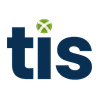TIS: “Nobody likes to be the first customer.”
Jörg Wiemer on founding TIS and the cut-throat competition of the software market.
Interview by Markus Dentz
Mr. Wiemer, ten years ago TIS entered the market. Back then, you were still treasurer at SAP®. What made you found your own company?
Making payments securely without being vulnerable to manual errors was a challenge that I was all too familiar with as a treasurer. Back then, not much had been done to solve that problem. We wanted to change that. We started out with a clear focus on cloud technology. Erol Bozak, who co-founded TIS with me, was a cloud expert at SAP®. So I had someone at my side who had the technical know-how we needed.
How did you meet Erol Bozak? And where did your business concept come from?
I met Erol while taking the executive MBA program at the University of Mannheim alongside work. This is where we came up with the idea for TIS. We worked closely with SAP® from the start. Initially, SAP® even contributed to the loan that was later transformed into an equity-related investment. Former SAP® CFO Werner Brandt (today on the board of supervisors of RWE, Lufthansa and Siemens, editor’s note) supported the project, as did the Mannheim professor Armin Heinzl who later joined our board of supervisors.
“Nowadays, clouds are market standard”
– TIS
Founding a company is always tough. What was you biggest challenge?
When you found a company, it always invokes the chicken-and-egg problem: You need references to show that your tech really works – but nobody likes to be the first customer. This is because CFOs and treasurers are often good at risk management, but they’re rarely early adopters. It took longer than we thought to catch their interest. Going into cloud technology wasn’t a safe bet for us.
Ten years ago, cloud solutions were by no means standard. Sometimes they were even eyed with suspicion.
Exactly! There were some competitors who said that cloud-based payment transactions would never catch on. But when we wrote our business plan, we had a clear vision. And Surveys showed that most treasurers thought cloud technology could be useful in their field of work. They were familiar with web-based solutions; they already used e-banking tools in their day-to-day. The most important thing, I believed, was that our solution would solve our customers issues fast. Additionally, it needed to be scalable, so that our customers’ IT departments would not have to start a whole project to get it going. These assumptions about our customers needs were proven right. Today, cloud solutions are a market standard. We are extremely happy that our vision has become reality.
Did you have any near-death experiences while starting out, as some start-ups report?
No. Fortunately, our finances were always sound – as a treasurer I do have some experience in liquidity planning (laughs). But every beginning is hard. Once the word spreads in the treasury community that a product works, however, new customers come quickly.
Your investors, like Target Partners from Munich, had to be more patient than anticipated, though, right?
Yes, but they know what the business is like. We were able to quickly establish trust with them. And in the next round of funding we were able to gain new partners such as Zobito from Sweden and the Israeli investor 83North.
The last round of funding took place in 2017. Last year TIS got a venture debt credit from the Silicon Valley Bank. Are you thinking about additional funding?
It’s not unthinkable. At the moment, our main goal is to innovate and to grow internationally. Since 2017, I have been in North America to support our efforts there. Another round of funding might make sense in this context.
The software market is highly competitive. Vendors like Kyriba that aren’t established in Germany yet are planning to make their move. How are you planning to deal with that?
We’re constantly working on our vision. What differentiates us from competitors is that we have a very clear focus on payments in connection to data analysis. We believe that for most companies, a clear-cut multitenant architecture is a better solution than going with a vendor who is a jack-of-all-trades. And when it comes the technology behind the cloud, we are definitely at the front. Our payment format library is extensive, and we are leaders in bank connectivity and SAP® integration. We can guarantee a speedy rollout for the customer. During the last ten years, the technology sector and the software market underwent many changes. We believe in a best-of-breed approach, where treasurers can pick and choose specialized solutions from different areas and connect them via API. This way customers will get the exact features they need to efficiently reach their goals. Therefore, we recently started a cooperation with the Finnish software vendor Analyste.
With Erik Masing you recently employed a COO who previously did not have many touchpoints with payments. What informed this decision?
Erik is a successful founder and entrepreneur with international experience. We are proud to have him as a part of our team at TIS. We are a fast-growing company. Our management’s scope of expertise should reflect that.
Speaking of growth: When we talked on your five-year anniversary, TIS had 35 employees and 50 customers. Where are you now?
Today we have 151 employees in three offices in Germany, as well as a location each in the Netherlands, Bulgaria, and the United States. Our customer base now consists of 150 organizations.



